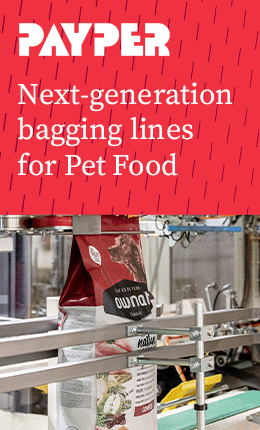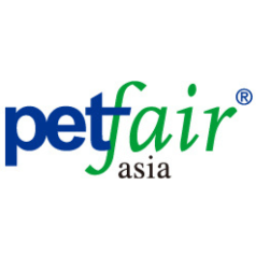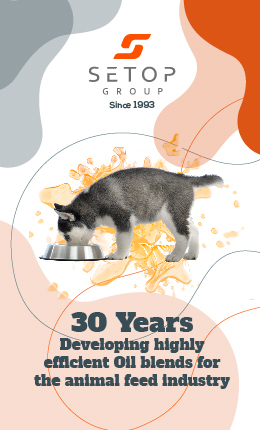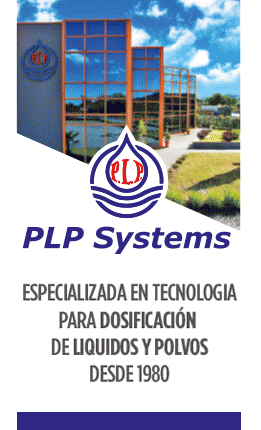Understanding these seasonal dynamics is important for pet food manufacturers, suppliers, and pet owners alike, as they can impact everything from the cost and availability of ingredients to the nutritional integrity of finished products.
Seasonal Variations in Raw Materials
Pet food production relies heavily on agricultural products, such as meat, grains, vegetables, and even vitamins, which are subject to seasonal fluctuations. For example, protein sources such as chicken, beef, and fish are influenced by factors such as breeding cycles, harvest seasons, and climatic conditions.
- Animal proteins: Livestock and poultry breeding are often planned around seasonal cycles, meaning the availability of certain meats can vary depending on the time of year. For example, poultry production often peaks in late spring and summer, which could affect the cost and availability of chicken-based ingredients or finished pet foods during the fall and winter months.
- Grains and vegetables: Crops such as corn, wheat, and barley have harvest seasons that vary depending on the region. Shortages or bumper harvests (excessively larger than normal harvest) can either lead to an increase in the cost of ingredients or an oversupply, respectively, both of which directly impact the cost structure of pet food. For example, grains harvested in late summer might be less available during the winter months, leading to a possible delay in ingredient procurement or price hikes.
Supply Chain Disruptions
The pet food industry, like many others, is part of a complex and global supply chain and seasonal shifts can cause disruptions, both expected and unexpected.
- Transportation Delays: In winter, adverse weather conditions such as snowstorms, flooding, or hurricanes can delay transportation and impact delivery schedules. Supply chains that rely on shipping, whether by truck, rail, or sea, are especially vulnerable. Pet food manufacturers may face challenges in maintaining stable inventory levels, particularly for perishable or high-demand ingredients.
- Global Sourcing: Many pet food brands source ingredients from different parts of the world. Seasonal challenges in one region can create ripple effects across the entire supply chain. For example, if a significant drought in one region causes a shortage of grains, the price of those grains can increase globally. Conversely, a bumper crop in another part of the world can drive prices down, but these shifts may not always be predictable.
- Labor Shortages: In certain seasons, especially during peak harvest periods or holidays, there can be a shortage of labor in the agriculture, manufacturing, and transportation sectors. Seasonal labor shifts can also lead to delays in pet food production, resulting in stock shortages.
Changes in Consumer Demand
Seasonality also influences consumer behavior. While pet ownership is generally a year-round commitment, certain times of the year can lead to shifts in demand for specific products.
- Holiday Seasons: During the winter holidays, consumers often buy extra pet food and treats for their pets, either as gifts or to pamper them during the festive season. This results in a surge in demand. If pet food manufacturers and suppliers are not prepared for this surge, it can lead to stockouts or rushed production, which may compromise product quality.
- Warm Weather and Pet Activity: As the weather warms up, pets may have different nutritional needs. For example, during the summer, dogs and cats may require more hydration, lighter meals, or specialized formulations to help them cope with the heat. This could lead to a seasonal increase in demand for specific types of pet food, such as wet foods or those enriched with electrolytes, which manufacturers must be prepared to meet.
- Economic Factors: The financial status of consumers often fluctuates with the seasons as well. For instance, during summer or spring, when vacations are more common, people may prioritize spending on leisure activities, which could affect discretionary spending on pet food. Likewise, during winter months or economic downturns, pet owners may tighten their budgets, which can impact sales of premium or luxury pet food brands.
Product Quality Concerns
Seasonal variations, both in raw material availability and manufacturing processes, can directly influence the quality of pet food.
Shelf Life and Freshness
Many pet food ingredients, especially those derived from animal products or certain grains, are perishable. Fluctuations in the availability of fresh ingredients, due to seasonal changes, can compromise the freshness and nutritional value of the final product if ingredients are used that fall outside acceptable quality parameters. Long storage times or transportation delays can lead to degradation in quality, resulting in a less nutritious or even potentially unsafe product.
Nutritional Integrity
Certain nutrients in pet food, such as Omega-3 fatty acids found in fish or specific vitamins, are sensitive to temperature, light, and time. If seasonal conditions cause delays in the processing or shipping of ingredients or if storage conditions are not optimal, the nutritional integrity of these ingredients can be compromised. This is particularly concerning because pet food is formulated to meet precise nutritional needs, and any variation can affect pets' health.
Ingredient Substitution
During periods of ingredient shortages, manufacturers may need to substitute certain ingredients to maintain production schedules. While substitutions are sometimes necessary, they can alter the taste, texture, and nutritional value of the final product. Pet owners may also notice that their pets react differently to foods with substituted ingredients.
Mycotoxins and Seasonal Influence
One of the most significant but often overlooked risks to pet food quality is the presence of mycotoxins—naturally occurring toxins produced by certain molds, particularly in grains such as corn, wheat, barley, and rice. These toxins can develop in the field, during harvest, or in storage, and their prevalence is highly influenced by seasonal conditions.
Weather-Driven Risk
Mycotoxin levels can spike during specific seasons, particularly when warm, humid conditions follow drought or heavy rains. For example, aflatoxin contamination is more prevalent in late summer and early fall, particularly in regions with high temperatures and moisture. Fusarium toxins, such as deoxynivalenol (DON), are more common in cooler, wet climates during the spring harvest. Inadequate drying and improper storage of grains during humid or fluctuating seasons can lead to mold growth, increasing the risk of mycotoxin contamination. This is particularly relevant when grains must be stored for extended periods due to seasonal supply chain delays.
Impact on Pet Health
Even at low levels, chronic exposure to mycotoxins in pet food can lead to reduced immune function, liver damage, digestive issues, and, in severe cases, fatalities. Pets are especially vulnerable due to their smaller body sizes and because many consume the same diet consistently over long periods.
Mitigation through Processing
Fortunately, many modern pet food processing methods help reduce mycotoxin levels in pet food. Techniques such as thermal processing (e.g., extrusion and baking), pelleting, and the use of adsorbent binders can lower the bioavailability of mycotoxins. Additionally, rigorous ingredient testing and quality assurance protocols allow manufacturers to screen raw materials and reject contaminated batches before processing. By implementing strict quality control procedures, sourcing from regions with lower contamination risks, and utilizing processing technologies that deactivate or bind mycotoxins, manufacturers can greatly reduce the threat of these toxins entering the pet food supply.
Conclusion
Seasonality is a powerful factor that impacts nearly every aspect of the pet food industry, from raw material availability to manufacturing, supply chain operations, and product quality. While some seasonal shifts are predictable, others require constant vigilance and adaptability from manufacturers and suppliers. This is especially true for emerging quality risks, such as mycotoxins, which are closely tied to climate conditions and can have serious health implications for pets. Fortunately, advances in food safety protocols and processing technologies offer effective tools to mitigate these challenges.
By understanding these seasonal patterns and planning accordingly, the pet food industry can keep meeting pet owners' needs while upholding product quality and consistency. As pet owners, it's crucial to stay informed about how seasonality might affect the pet food products we buy and to be ready for possible changes in availability or quality. By selecting brands that closely collaborate with manufacturers to predict and address seasonal challenges, we can ensure our pets receive the best nutrition throughout the year.
How BSM Partners Can Help
At BSM Partners, our team of nutritionists, veterinarians, regulatory experts, and product development specialists is uniquely equipped to help pet food companies navigate the complexities of seasonality. From sourcing strategies and mycotoxin mitigation to formulation adjustments and quality control, we offer science-based solutions tailored to your brand's specific needs. Our expertise in testing protocols, ingredient assessment, and supply chain optimization ensures that your products remain safe, consistent, and of high quality, regardless of the season.
Partnering with BSM means having a proactive strategy in place to meet seasonal challenges head-on, while continuing to deliver superior nutrition to pets throughout the year.
By Emily Taylor
Source: BSM Partners
About the Author
Dr. Emily Taylor is Manager of BSM Assurance, BSM Partners' Food Safety, Quality Assurance, and Regulatory Services team. Dr. Taylor is a nutritionist with over 14 years in the animal industry. She resides in Lafayette, Indiana, with her family, showing dressage horses.
You could be interested: Why Dried Egg is the Perfect Ingredient for Pet Food?






























